Shopify ERP Integration

Table of Contents
Stay Up to Date on SaaS Marketing With Binstellar
SHARE :
How to Integrate ERP with Your Shopify Store?
In today’s fast-paced e-commerce world, the synchronization of your online store with an efficient ERP system is not just a luxury, it’s a necessity for scaling your business effectively. Whether you’re a small start-up or a well-established business, the Shopify ERP system integration can significantly streamline your operations, offering real-time insights into inventory, orders, customer data, and financials, but reaching out to a Shopify development company is an ideal choice.
But, how do you start this journey? Don’t worry, we’ve got you covered. In this guide, we’ll walk you through a detailed, step-by-step process to make this integration as smooth as possible.
Step 1: Evaluate Your Needs
- Assess Business Requirements: Identify the specific functionalities you need from an ERP, such as inventory management, financial tracking, or customer relationship management.
- Shopify Compatibility: Ensure the ERP system you choose can integrate with Shopify. Some popular ERPs compatible with Shopify include SAP, Oracle NetSuite, and Microsoft Dynamics.
Step 2: Choose an ERP Solution

- Research ERP Options: Look for ERP systems that best fit your business size, industry, and specific needs.
- Check Integration Capabilities: Verify that the ERP can seamlessly integrate with Shopify. Look for built-in integrations or APIs.
- Consider Scalability: Choose an ERP that can scale with your business growth.
- Cost Evaluation: Analyze the total cost of ownership, including setup, subscription, and any additional integration costs.
Step 3: Plan the Integration
- Map Data Flow: Plan how data will flow between Shopify and the ERP (products, orders, customer data, inventory, etc.).
- Identify Key Integration Points: Determine the key touchpoints, like order import/export, inventory synchronization, and customer data management.
- Create an Implementation Plan: Develop a timeline, including milestones for integration testing and going live.
Step 4: Set Up the ERP System

- Install ERP Software: If it’s a cloud-based ERP, create an account, or install software for on-premises solutions.
- Configure ERP Settings: Customize the ERP settings to align with your business processes (e.g., accounting rules, inventory management settings).
Step 5: Integrate with Shopify

- Use Built-In Integration Tools: If your ERP offers a direct integration with Shopify, use the built-in tools to connect.
- API Integration: If there’s no direct integration, use the ERP’s API to connect with Shopify’s API. This might require technical expertise.
- Third-Party Integration Platforms: Consider using platforms like Zapier or Automate.io if direct or API integration is not feasible.
Step 6: Data Migration and Synchronization

- Transfer Existing Data: Import existing data from Shopify to your ERP (and vice versa if necessary).
- Ensure Data Synchronization: Set up real-time or scheduled data synchronization between Shopify and the ERP.
Step 7: Testing
- Run Tests: Perform thorough testing to ensure that the integration works as expected.
- Validate Data Accuracy: Check if the data synced between Shopify and the ERP is accurate and complete.
- Test Different Scenarios: Test various scenarios like new orders, returns, inventory updates, etc.
Step 8: Go Live
- Launch Integration: Once testing is successful, go live with the integration.
- Monitor Performance: Continuously monitor the system for any issues or discrepancies.
Step 9: Ongoing Maintenance and Support
- Regular Updates: Keep both the ERP and Shopify updated to their latest versions.
- Seek Support When Needed: Utilize support from either Shopify experts or your ERP provider for any issues.
Additional Tips
- Backup Data Regularly: Always maintain backups to prevent data loss.
- Stay Informed: Keep up with updates and best practices for both Shopify and your ERP system.
- Engage with a Specialist: If the integration process is complex, consider hiring an ERP integration specialist.
Wrapping up
Remember, while this process can transform your business operations, making them more efficient and integrated, the journey involves careful planning, execution, and continuous monitoring. But don’t let the complexity intimidate you! Hire Shopify developers who can assist you every step of the way. From choosing the right ERP solution to ensuring seamless integration and providing ongoing support, our experienced professionals are here to make your transition as smooth and hassle-free as possible.

Akshima Jain
Content Production Manager





